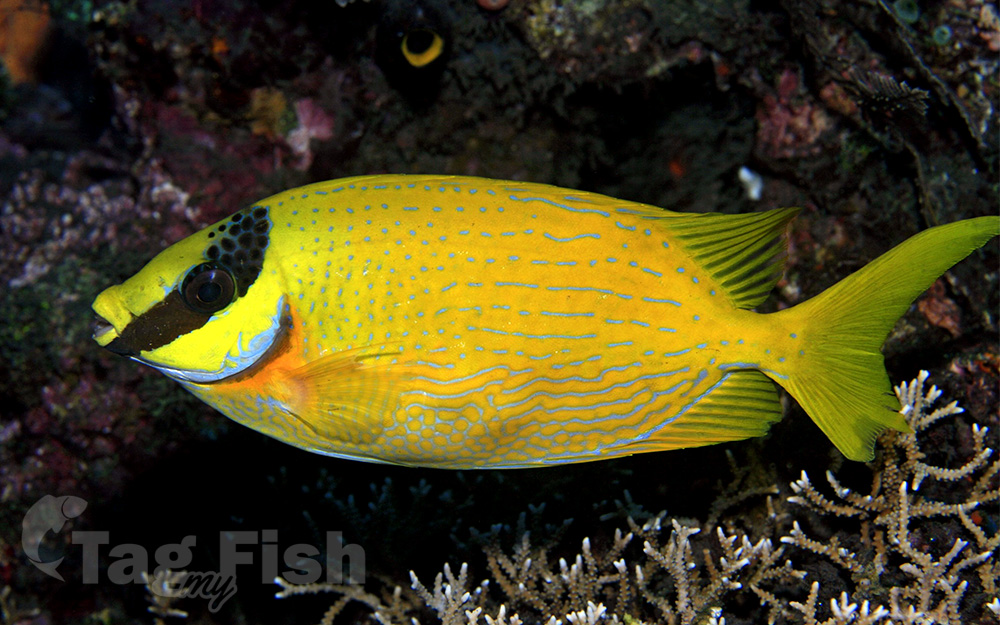Masked spinefoot
(Siganus puellus)

Classification
General data
The masked spinefoot has a compressed body. The depth of its body fits between 2.3 and 2.6 times into its standard length. It has a symmetrical wedge-shaped head with a slightly protruding snout. The front nostril is flanged, the flange growing in to a triangle shaped flap to the rear. There is a recumbent spine to the front of the dorsal fin. Like all rabbitfishes, the dorsal fin has 13 spines and 10 soft rays while the anal fin has 7 spines and 9 soft rays.
The fin spines are robust and hold venom glands.
The caudal fin is strongly forked, especially in adults, with acutely pointed lobes.
This species attains a maximum total length of 38 cm (15 in), although 25 cm (9.8 in) is more typical.
The upper body is yellow shading to light blue to white on the lower body. It is marked with sinuous blue lines that are vertical towards the head and horizontal towards the tail. These are replaced with blue spots towards the abdomen. There is a broad diagonal black band that runs through the eye and extends from the chin to the nape. Over the eye, this band breaks up into black spots. The colour of the fins is yellow.
The masked spinefoot has a wide Indo-West Pacific range which extends from the Cocos-Keeling Islands and the outer reefs of northwestern Shelf of Western Australia through Indonesia to the Ryukyu Islands and Kiribati, to southern Great Barrier Reef and New Caledonia. It is found to depths down to 30 m (98 ft) in the shallow waters of clear lagoon rich in corals and on seaward reefs.











